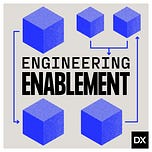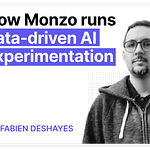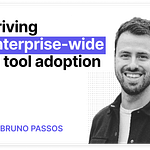Listen and watch now on YouTube, Apple, and Spotify.
In this episode, I talk with Gilad Turbahn, Head of Developer Productivity, and Amy Yuan, Director of Engineering at Snowflake, about how they approach operational excellence. We dig into how they build trust with engineering teams, the communication rhythms that keep their org aligned, and how they treat internal teams like customers. Gilad and Amy also share how Snowflake uses roadmaps, advisory boards, and direct feedback to drive priorities—and how they’re evolving their planning practices to scale with the company.
Some takeaways:
What operational excellence looks like at Snowflake
Do what you say you’ll do—on time—to build trust.
Treat internal teams like customers.
Use documentation and help channels to support engineering teams at scale.
Creating a strong feedback loop
Feedback is only valuable if it’s followed up on—Snowflake closes the loop with a tracking system (tracking each person spoken to) and a weekly ops review.
Show how the feedback is reflected in the road map, or explain why it isn’t.
Snowflake’s five-part communication rhythm
Weekly newsletters
Surveys to gather and prioritize needs
Interviews across levels
Roadshows and all-hands
A mix of top-down and bottom-up adoption strategies
Barriers to operational excellence
Lagging adopters and resistance to change
Wrong leadership style for the team or individual—leadership should be tailored to the individual and team needs.
Customer engagement, redefined
Treat engineers like customers—tailor time and communication to their needs.
Attend team all-hands, host listening sessions, and use data to show trade-offs.
Snowflake adjusts session length from quick 5-minute syncs to deep 60-minute sessions depending on the needs.
Converting detractors into allies
Snowflake PMs are highly technical and dive deep into engineers’ pain points.
They walk through problems collaboratively and validate concerns.
Customer Advisory Boards help create evangelists from within.
Customer Advisory Boards at Snowflake
Boards are built from diverse teams and levels—both promoters and detractors.
They look for people who are vocal.
Members are identified either in interviews or nominated by directors.
Meetings are informal with no pressure to make every single meeting.
They use Slack to keep the feedback loop active.
Moderate effectively: At Snowflake the process is to introduce a road map, design, quarterly plan, or survey results. Then ask members what is top of mind.
Planning and goal-setting at Snowflake
Planning at Snowflake is done both annually and quarterly.
They balance OKRs with a long-term North Star.
They are currently experimenting with “thematic prioritization.” Thematic prioritization uses main themes that can make a difference to customers.
In this episode, we cover:
(00:00) Intro: an overview of operational excellence
(04:13) Obstacles to executing with operational excellence
(05:51) An overview of the Snowflake playbook for operational excellence
(08:25) Who does the work of reaching out to customers
(09:06) The importance of customer engagement
(10:19) How Snowflake does customer engagement
(14:13) The types of feedback received and the two camps (supporters and detractors)
(16:55) How to influence detractors and how detractors actually help
(18:27) Using insiders as messengers
(22:48) An overview of Snowflake’s customer advisory board
(26:10) The importance of meeting in person (learnings from Warsaw and Berlin office visits)
(28:08) Managing up
(30:07) How planning is done at Snowflake
(36:25) Setting targets for OKRs, and Snowflake’s philosophy on metrics
(39:22) The annual plan and how it’s shared
Where to find Amy Yuan:
• LinkedIn: https://www.linkedin.com/in/amy-yuan-a8ba783/
Where to find Gilad Turbahn:
• LinkedIn: https://www.linkedin.com/in/giladturbahn/
Where to find Abi Noda:
• LinkedIn: https://www.linkedin.com/in/abinoda











